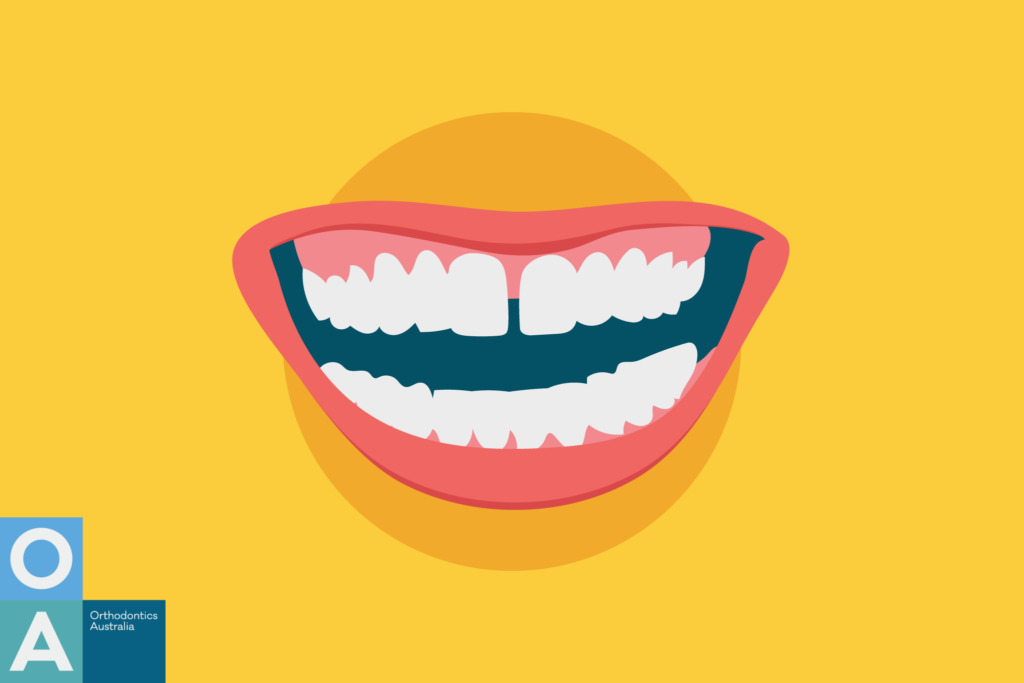Do you have gaps between your teeth? This space between your pearly whites is a common dental occurrence called a ‘diastema’, and can appear for a number of reasons.
Some patients with a diastema like the individual character it brings, while others might prefer a more conventional smile. Sometimes, spaces between teeth can be a warning sign too. Whether you don’t mind the gap or prefer to close it, you’ll find all the information you need about them here.
What causes gaps between teeth?
With teeth, it often helps to get to the source of the problem. And for a diastema, there can be many causes:
- Smaller than average teeth and/or a larger than average jaw can lead to significant spacing between the teeth. And because both tooth sizes and jaw sizes are hereditary, chances are if your parents have any gaps in their teeth, you (or your future children) might too.
- The tissue between your teeth and gums are a little too generous in size, leading to the gap between your teeth. If your orthodontist mentions your labial fraenum, this is the tissue they’re talking about.
- Gum disease is a serious non-genetic cause of tooth spacing, because any increase in the gaps can signal that the disease has advanced. Inflammation in the gum and bone around the teeth can loosen your teeth can cause these gaps. As most serious and chronic gum disease (periodontitis) is relatively painless, it may progress without you knowing about it. This emphasises the need for regular check-ups with your dentist.

Do gaps in teeth get bigger with age?
Your teeth are constantly shifting and growing, which is more noticeable in your younger years as your jaw is still growing into maturity. However, many people find that their teeth will continue to shift throughout their life. This may mean that gaps in teeth can get bigger over the years, or in some cases they may get smaller. You’ll need to have a consultation with an orthodontist to understand how your teeth are shifting as you age.
Can bad habits form gaps in teeth?
Gaps between teeth can also result from habits. Some people push their tongue towards their teeth when they swallow, as opposed to the roof of their mouth. Orthodontists call this movement a ‘tongue thrust’, which if significant, can gradually push your teeth further apart.
Are gapped teeth unattractive?
Beauty is subjective! And what we find attractive is often just what is trending.
Fashion goes in and out of, well, fashion, but there’s a long history of gapped teeth as a hallmark of beauty. French actress Brigitte Bardot introduced many to a new kind of beautiful smile in the 50s and 60s, and supermodel Lauren Hutton carried the torch beyond that. From Madonna to Lara Stone, Eddy Murphy to Ed Westwick, a diastema has been considered a unique and characterising addition to an individual’s appearance. And it can be for you too.
Can teeth gaps close naturally?
Sometimes, gapped teeth put aside their differences and come together naturally. There are often gaps in baby teeth, and when adult teeth come in, they can be spaced out too (we all have that photo). When more adult teeth come through, these gaps can close without intervention. This is why we recommend having an orthodontic ‘home’ for your child from an early age, to help your orthodontist monitor their growth and keep you informed about any changes to their smile that are likely to occur naturally.
How do you treat diastema on teeth?
Depending on the cause, diastema treatment varies. Clear aligners – like Invisalign®, Spark® and 3M Clarity® – and traditional braces are an excellent path to a permanent fix. Depending upon your individual tooth size and anatomy, this can avoid any need for restorative dental work. Your specialist orthodontist will advise you regarding all of the options for your individual case, along with all the important finer details. Remember, the little things can be very important!

How long does it take to close gaps in teeth with braces?
With braces, a lot of factors can come into play. Bone density, the degree of malalignment and your age may all affect your treatment predictability and time.
As for how long it takes for them to work, noticeable changes will generally show after four to six weeks. And if it’s only the gap that needs closing, then it’s not unusual for braces to only need six to eight months to get the job done.
Every individual case is unique and good quality treatment can take anywhere between six to 24 months. Don’t be discouraged, as your specialist orthodontist might surprise you with an expedited solution.
How can you fix the gap in your teeth at home?
While ‘gap bands’ might seem like a cost-effective, at-home solution, their use isn’t recommended by registered health professionals because these simple rubber bands can be very dangerous. The tight bands can move up under your gums and become lodged, and irreversibly damage your teeth. This can result in loose teeth or teeth that need to be removed. In short, it’s best to leave the treatment to the professionals.
Please always consult a specialist orthodontist first before making any decisions. Your teeth and your smile are extremely important, therefore any changes or improvements to them should be done safely and predictably with a true expert. Use our Finder Tool to find a specialist orthodontist near you.










What is the cause of gap in teeth at my mid twenties and what should I do close the gap.
Hi Samuel,
You may develop a gap as your teeth naturally shift over time, or there may be an underlying cause to your tooth movement. It is impossible to tell without a professional consultation. Schedule an appointment with a specialist orthodontist who can assess your teeth and provide you with options such as clear aligner treatment to correct any irregularities or issues.
To find an orthodontist near you, you can use our Finder Tool here: https://finder.orthodonticsaustralia.org.au/